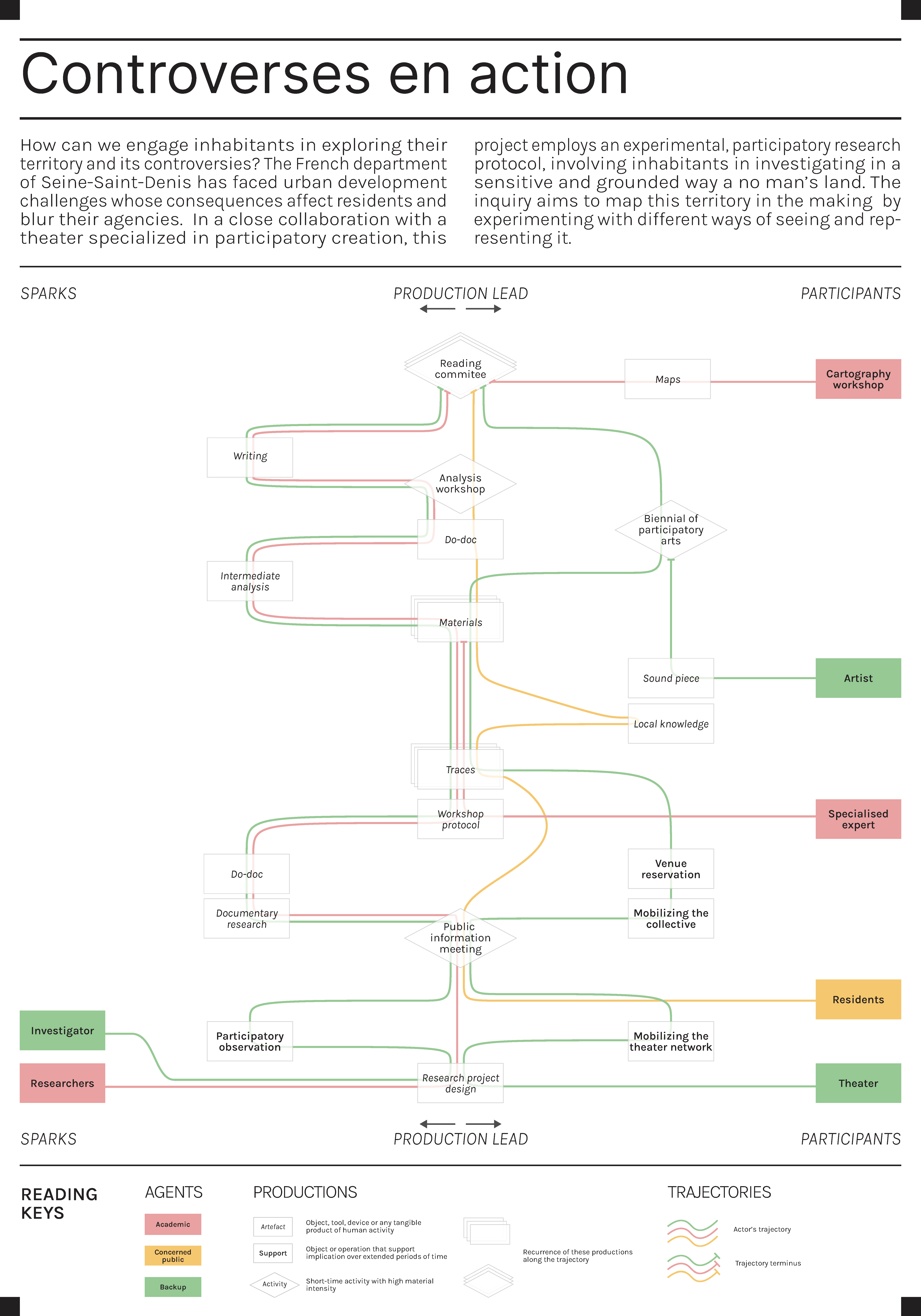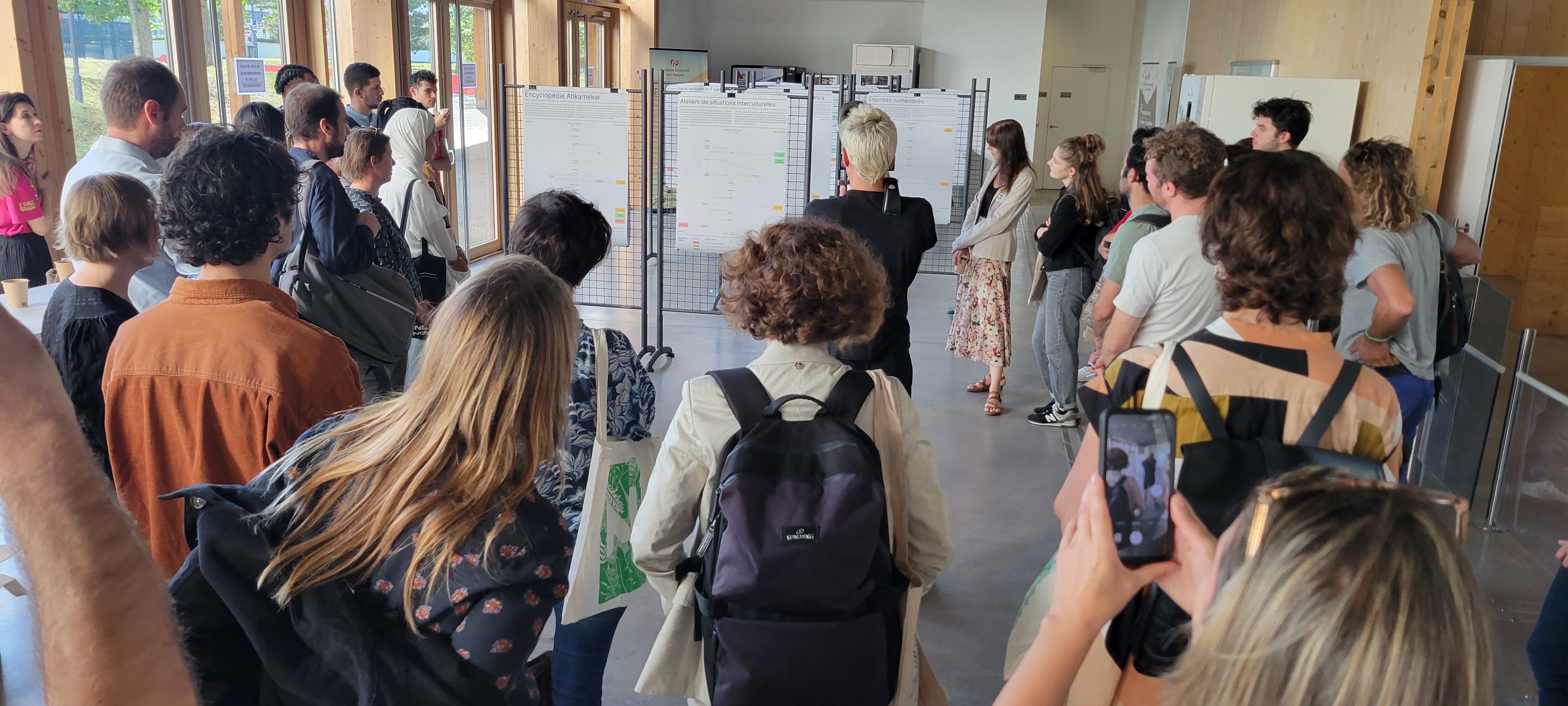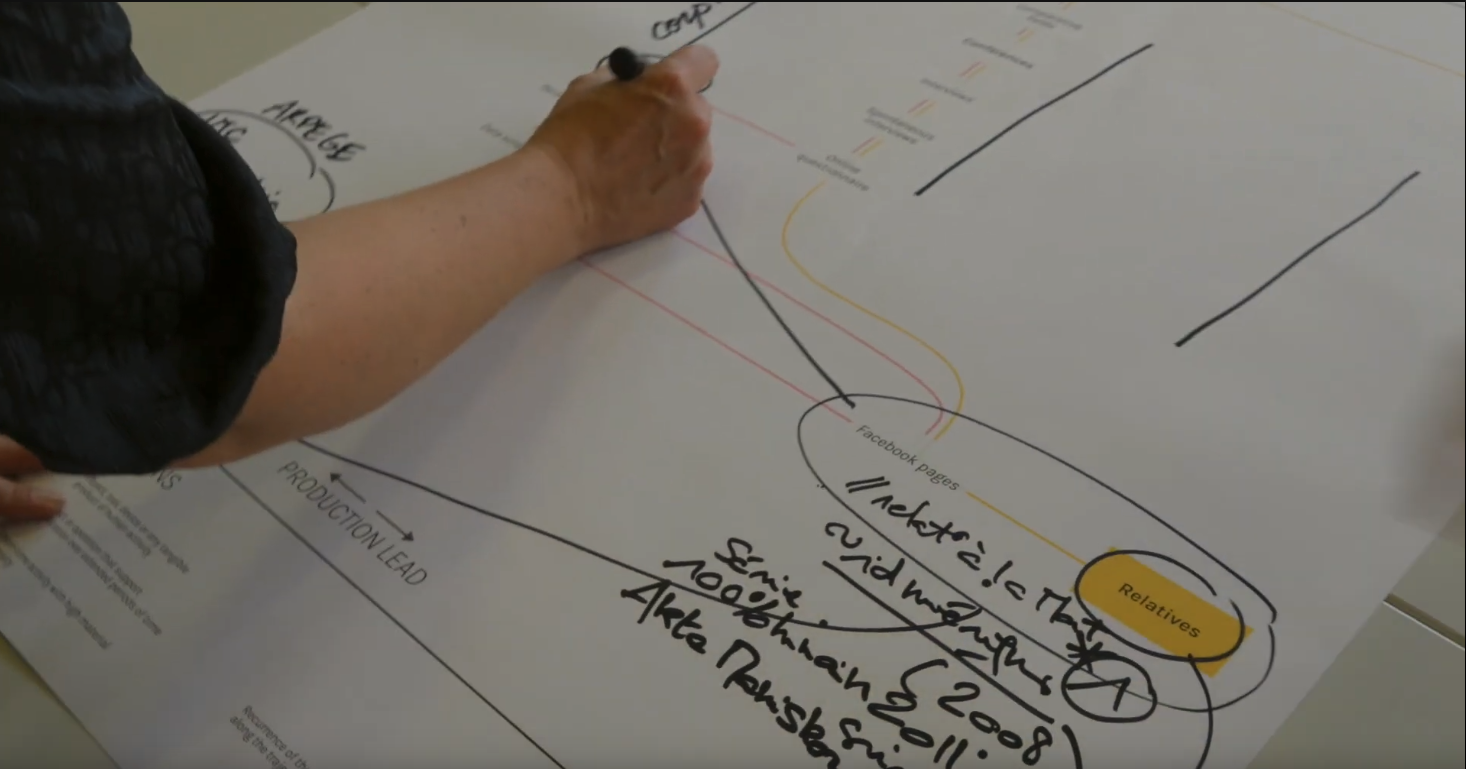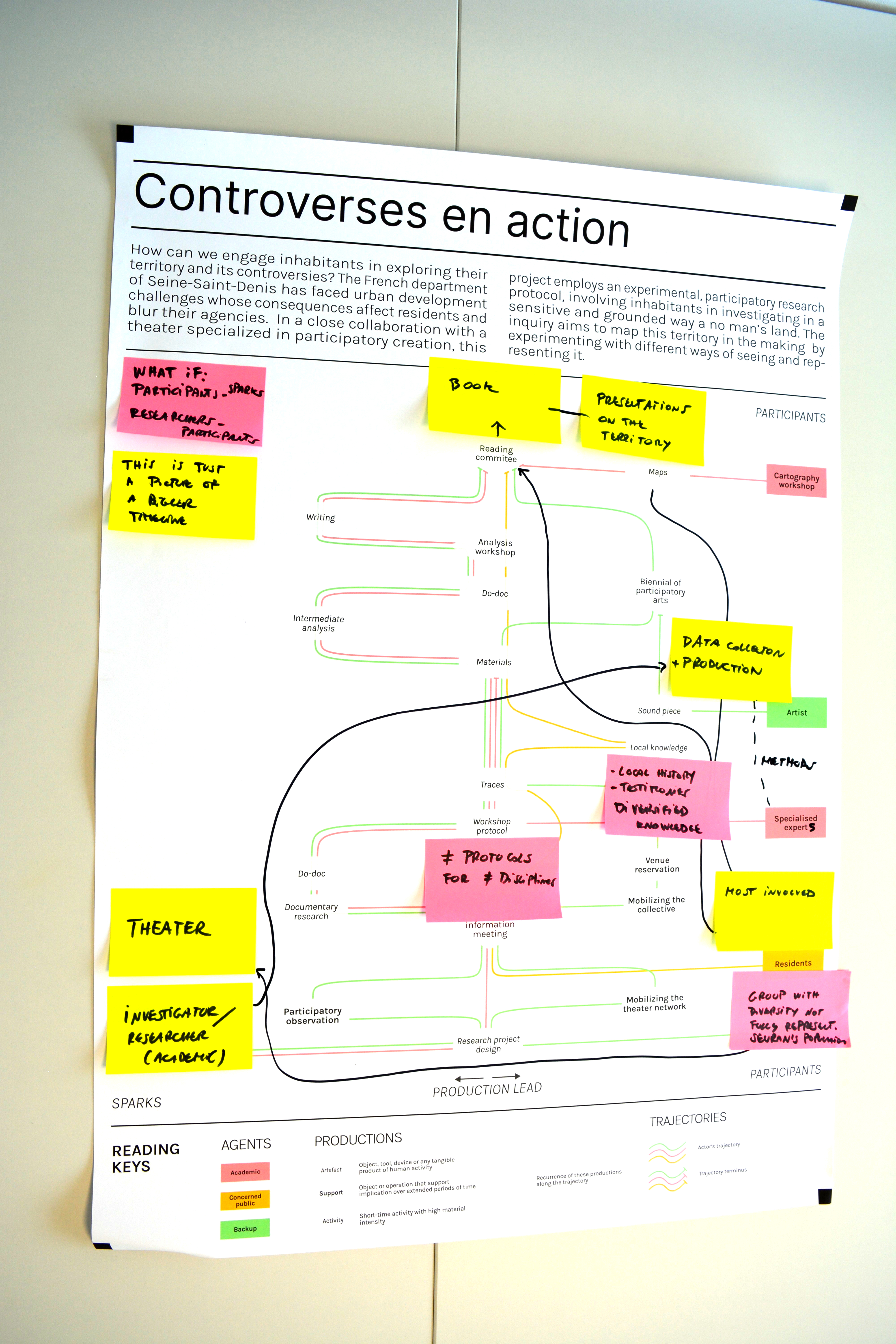Trajectoires d'implication
How to describe the transformative consequences of participative research processes ?
Research
This project was funded by the Institut Universitaire de France under the direction of Marta Severo (DicenIDF, Université de Nanterre), in collaboration with the médialab.
Trajectories of engagement refer to moments in the research process where external actors are involved and co-construct knowledge with the research team. These research paths involving an outside can take various forms of material production based on physical and/or digital environments . Often used in digital data-grounded labs or citizen science projects, trajectories of engagement are shaped in research which aims to address social concerns or public issues.
This research project aims to explore and describe the different forms that trajectories of engagement can take in the humanities and social sciences, the interactions between internal and external actors that they can generate, and the materiality of the socio-technical choices involved. The expected outputs are to build an observatory and a network of researchers interested in studying these trajectories and a book will be written to present the identified trajectories.
You can participate in the project by contacting us to schedule an interview. All participants will be invited to the final event, the 15 september 2023 in Paris and may be included in a collective book on the identified trajectories.
Context
Research in humanities and social sciences is often driven by a desire to address social concerns or public issues. In these contexts, the researcher is often pushed to build a trajectory of engagement.
What do we mean by trajectory of engagement? Simply put, it’s a research trajectory where the research team (the “inside”) engages and builds relationships with external actors (the “outside”). This outside could be other researchers, institutions, associations, companies, students, or even the general public. This engagement from the “outside” can take different forms such as providing or interpreting data or even co-creating the research protocol.
So, trajectories of engagement are research paths that articulate moments where only the inside is involved with other moments where inside and outside are both implicated.
These trajectories share three key properties:
- They respond to a public issue or social concern (such as climate change, AI, disinformation, etc.)
- They aim to actively engage external actors in the research process, rather than just consulting them at the end.
- They might be supported by the traceability of social interactions made possible by digital devices.
Involvement of external actors can take various forms, such as interfaces (artistic installations), experimental protocols (publication protocols), devices (participatory platforms), and events (hackathons). The involvement of the outside in research trajectories can go both ways. The research team can incorporate external actors or strategies from the outside into the research process (such as reproducing models from third places or using play practices). Alternatively, external actors can contribute to the research trajectories in various ways, such as by providing data, tasks, or ideas. In short trajectories of engagement are moments of knowledge production in which the outside co-constructs with the inside.
Goals & Purposes
The purpose of this research project is to engage in a critical and collective reflection on trajectories of engagement in the humanities and social sciences. The goals of the project include building an observatory and network of researchers interested in investigation the materiality of these trajectories and exploring the following research questions:
- What are the different forms that trajectories of engagement can take in the humanities and social sciences?
- How do internal and external actors interact in trajectories of engagement, and what are the implications of these interactions for knowledge production?
- What is the role of the material infrastructure in trajectories of engagement, and how does it shape the involvement of external actors? What are material configurations that foster involvement in different contexts ?
- What are the material and socio-technical choices involved in the use of trajectories of engagement, and how do these choices impact the research process and outcomes?
Methodology
After a first phase of interviews conducted by Alex Pellier, we have drafted a series of diagrams representing the trajectories of implication of invited research projects, according to a consistent visual grammar and vocabulary.

On the 15th of September, we have gathered academic and non-academic actors in order to leverage our work as a way to trigger discussion, problematization and critique about the stakes of trajectories of engagements. During that day, we have discussed the material conditions of these trajectories and how to represent them visually by presenting and then collectively amending each of the diagram.



An update of the project’s website featuring all the materials produced during this process is under development, and a collective book gathering feedbacks and redefinitions from participants is in preparation as well.